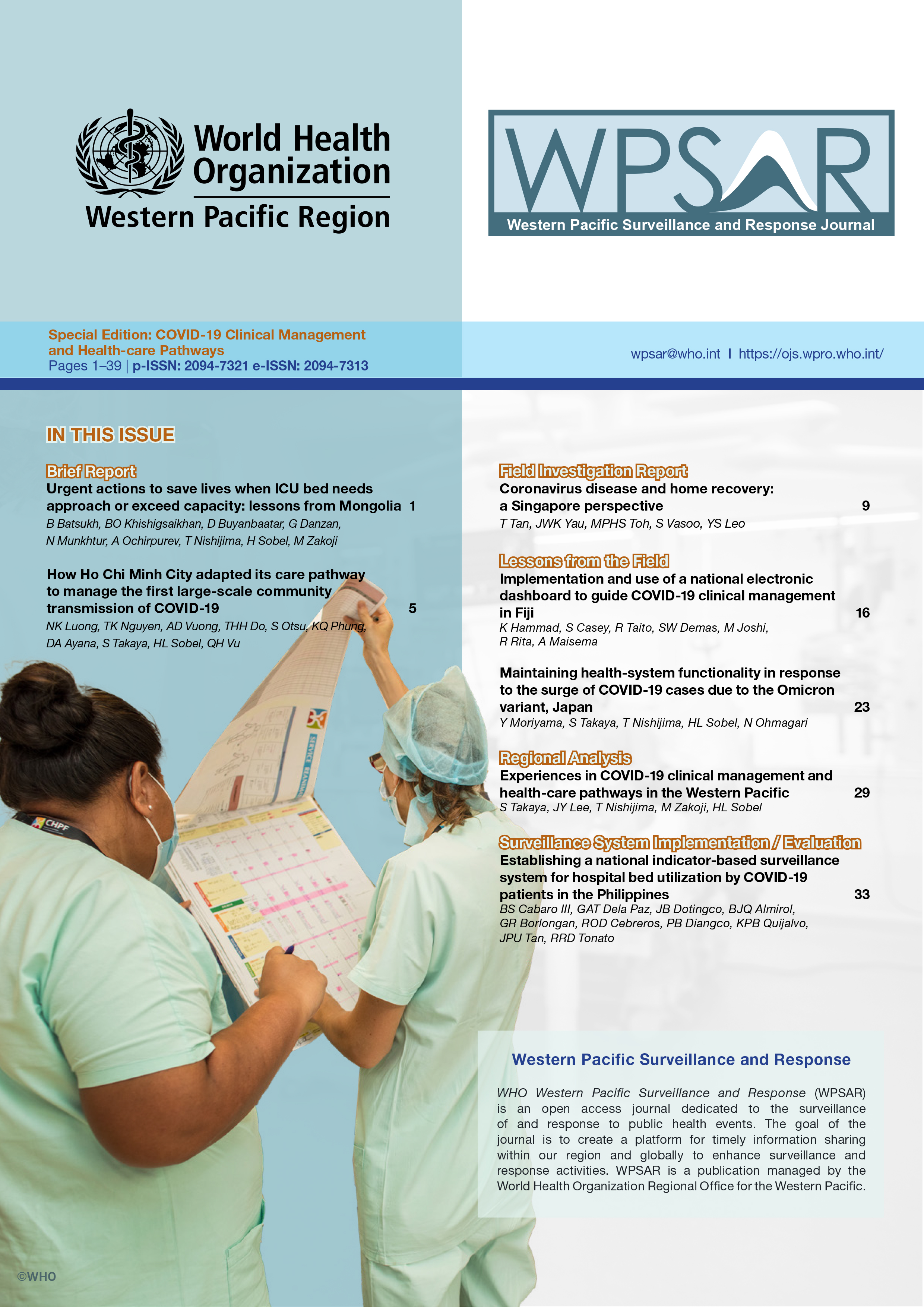Coronavirus disease and home recovery: a Singapore perspective
DOI:
https://doi.org/10.5365/wpsar.2023.14.5.1003Keywords:
Coronavirus, COVID-19, Pandemic, Singapore, Epidemiology, Management, PreventionAbstract
Objective: At the beginning of the coronavirus disease (COVID-19) pandemic in Singapore, the strategy initially involved aggressive ring-fencing of infections, before pivoting towards managing recurrent local interspersed outbreaks of COVID-19. A key feature of Singapore’s efforts to preserve health-care capacity was the implementation of the nationwide Home Recovery Programme (HRP), whereby patients were allowed to recover at home as long as they met certain criteria. The programme was centrally coordinated by Singapore’s Ministry of Health and was supported by telemedicine providers, primary care physicians and government agencies. This report aims to highlight Singapore’s experience in coordinating and implementing the HRP, the challenges faced and the outcomes.
Methods: Published and internal data from the Ministry of Health in Singapore, along with policy documents, were reviewed together with a brief literature review of similar programmes conducted globally.
Results: Implementation of the HRP led to the majority of patients (98%) recovering from COVID-19 in the outpatient setting, with similar mortality rates to inpatient settings. Hospitalization rates for COVID-19 cases were reduced as compared to previously, alleviating strain on the health-care system.
Discussion: The HRP was largely successful at preventing health-care capacities from being overwhelmed, while keeping fatalities to a minimum. Nonetheless, the risks of emergent variants of concern remain present, and heightened vigilance and potential modification of existing protocols based on fluctuations in virulence and infectivity are still needed.

